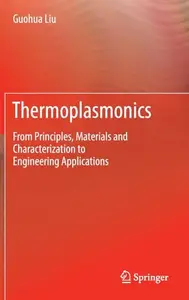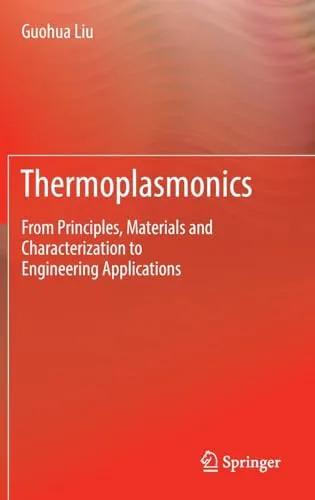Thermoplasmonics: From Principles, Materials and Characterization to Engineering Applications by Guohua Liu
English | PDF EPUB (True) | 2024 | 187 Pages | ISBN : 9819783313 | 40 MB
This book is built on the recent advancements in understanding thermoplasmonics and highlights the exciting new directions that are shaping this field. Thermoplasmonics using light to heat nanostructures is a promising and rapidly expanding subfield of plasmonics. When the light frequency matches the oscillation frequency of free electrons on the nanostructures, it induces a collective oscillation known as plasmon resonance. This effect allows fantastic control over the optical field at sub-wavelength scales, enhancing the light-matter interaction to surmount the diffraction limits. The plasmon resonance is responsible for fascinating and tunable properties, such as local field enhancement, generation of hot electrons as well as the localized/collective heating. These energetic carriers and heat can be harvested to drive a wide range of physical and chemical processes, making them promising for different fields of science. In this book, we discuss the recent advances in understanding of thermoplasmonics and highlight some of the exciting new directions, covering aspects of its principles, materials, and characterization, along with the diverse applications. The basic fundamentals are first introduced from plasmonic theory and thermodynamics to the thermal-induced processes. Then, much effort is placed on examination of thermoplasmonic materials and the common synthesis methods. The strategies for proper material selection and rational structural design are summarized toward more efficient energy conversion. The synthesizing methods for novel nanostructures are presented with a goal to achieve optimal thermoplasmonic properties. Afterward, the characterization technologies for thermoplasmonics are also addressed, which involves analytic and computational approaches as well as nanoscale thermometry. For each application, the unique role of thermoplasmonics and their associated benefits are elaborated. Research trends and insights into the use of thermoplasmonics to improve performance are analyzed as well. Finally, the current challenges and future perspectives in this field are pointed out in this book.
Thanks For Buying/Renewing Premium From My Blog Links To Support
Without You And Your Support We Can't Continue
Without You And Your Support We Can't Continue



